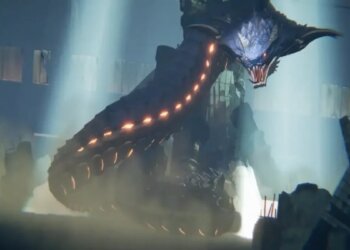The last time fans got a new installment in the Fatal Fury series was back in 1999, making Fatal Fury: City of the Wolves a highly anticipated sequel. Those familiar with the intricate and unique mechanics of the earlier titles will find City of the Wolves a refreshing update. On the other hand, newcomers will be introduced to a combat experience that sets itself apart from other popular fighting games, though they might note that it’s somewhat short on content.
Unlike the likes of Tekken 8 or Street Fighter 6, City of the Wolves doesn’t boast elaborate game modes, cinematic cutscenes, or impressive visuals. Instead, it focuses squarely on the fundamentals of fighting games, rewarding players who are quick on their feet and willing to master its arcade-style mechanics. With a design that emphasizes universal techniques over character-specific ones, players can quickly feel like experts while exploring the character lineup. Features such as Just Defense, REV Blows, and counters add layers of satisfaction for those who invest the time to master its intricacies.
While the game’s multiplayer seems poised for a vibrant future thanks to its deep combat mechanics, the single-player experience feels a bit dated and uninspired. Its lack of engaging narrative or robust alternative gameplay might leave casual gamers disenchanted, especially if they’re used to the richness of other AAA fighting titles like Mortal Kombat or Street Fighter. How much you enjoy City of the Wolves depends largely on the expectations you set right from the start. Come in with the right mindset, and it’s likely to be the most enjoyable fighting game you’ll encounter this year.
Creating a fighting game that appeals to both hardcore enthusiasts and casual players is no small feat. City of the Wolves successfully bridges that gap, offering both technical action and straightforward fun. Unlike other series with lengthy move sets, understanding the move lists of City of the Wolves’ characters is refreshingly straightforward. While this simplicity might be off-putting to seasoned Tekken players accustomed to complex combos, City of the Wolves manages to retain depth despite its simplicity. Here, the challenge lies in applying universal mechanics to diverse character archetypes, like pitting a slow-powerhouse against a nimble acrobat.
At times, City of the Wolves feels more akin to a single-player action game than a typical fighting game. Drawing a comparison to something like Dark Souls, where each weapon has its style—Tizoc might play like a strong, lumbering greatsword, while Hokutomaru resembles a fast, agile rapier. The game’s core mechanics play the biggest role in determining your success, making it important to master general skills like the REV Guard over memorizing specific combos. This system keeps players engaged and encourages experimenting with different characters without feeling daunted.
The mechanics themselves are quite satisfying. Executing perfect blocks, counters, backsteps, and other actions deliver a gratifying sense of achievement, especially with the game’s precise hitboxes enabling exact moves and clutch attacks. The REV Gauge and S.P.G. are tools that can instantly sway a match’s outcome, infusing unpredictability while maintaining strategic integrity.
This accessible approach also considers newcomers, simplifying character-specific combos and special moves without diminishing the gameplay. The Smart Style feature, somewhat inspired by Tekken 8’s Special Style, promises accessibility with a streamlined control setup. However, with City of the Wolves already boasting simplified inputs, Smart Style can sometimes feel overly simplified, almost like the game is playing itself.
City of the Wolves doesn’t offer a traditional single-player narrative. Instead, it presents an arcade mode, where players face off against eight challengers, along with the inventive South Town mode. The latter lets players loose in the famed Fatal Fury city, tackling nonlinear battles while leveling up their chosen character. As they advance, characters not only get stat boosts but also gain special skills and modifiers—adding a layer of depth and variety to the experience.
However, Episodes of South Town can feel like an enhanced arcade mode with unnecessary extras. Its campaigns are somewhat disjointed, missing the opportunity for a grander narrative, which is unfortunate given the absence of a comprehensive single-player storyline. The notion of “exploring” South Town is somewhat misleading, as it primarily revolves around navigating menus rather than actual exploration. While extensive exploration isn’t essential in a fighting game, the mode’s presentation suggests otherwise.
Despite its single-player limitations, Fatal Fury: City of the Wolves shines where it matters most. It doesn’t have the cinematics or flashy modes of its competitors, but it excels in gameplay fundamentals. SNK has successfully revitalized this classic series for the modern era, and there’s hope that future entries will continue to sharpen and expand upon City of the Wolves’ undeniable strengths.
Fatal Fury: City of the Wolves is set to release on PlayStation 5, PC, and Xbox Series X|S on April 24, 2025. This review was based on a PS5 copy provided by Game Rant.









































